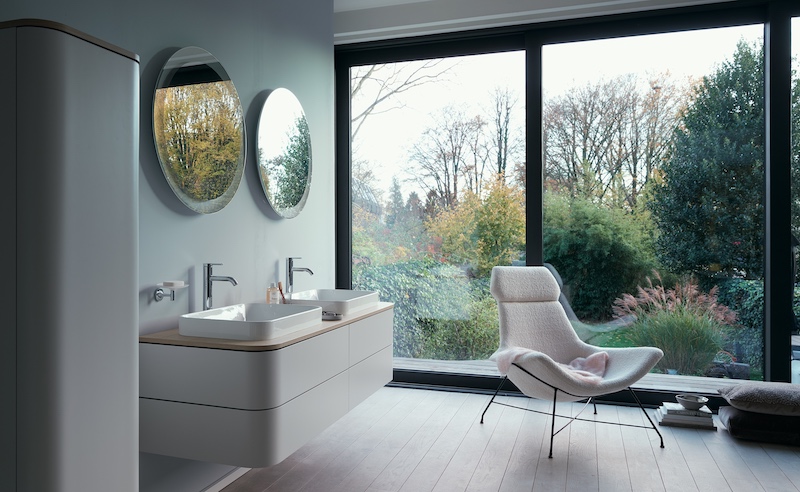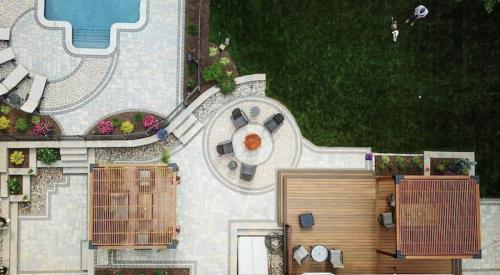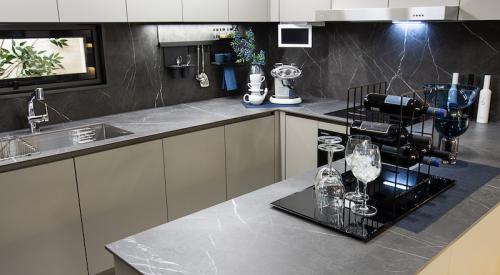Wellness design was already a trending topic before COVID-19 took center stage. Much like its older sibling, green design, wellness has become a buzzword, so we took a deeper dive into what it actually means and how pros can use it in their homes.
Architects who specialize in wellness design say the pandemic has exposed the need for better building practices as people spend more time in their homes.
[Related: NEW AIRTHINGS HUB GIVES ACCESS TO INDOOR AIR QUALITY DATA ANYTIME, ANYWHERE ]
“COVID-19 has made everyone painfully aware of the role our homes play in our health and safety,” says wellness design consultant, Jamie Gold, CKD, CAPS, MCCWC. “I think we’re all looking at what we can do to make them even healthier and safer spaces. That conversation incorporates indoor air quality, low maintenance surfaces that are easier to disinfect, more connections to private outdoor space where possible, secure data networks for studying and working from home, and spaces that allow for temporarily quarantining packages and vulnerable family members.”
The extent to which the general public adopts wellness design is up in the air, and Gold says it will depend on how long and how hard we’re hit by the pandemic. However, she doesn’t see the risk completely disappearing and that wellness design will carve a greater place in U.S. home design.
[ Related: 7 SANITIZING AND ANTIMICROBIAL PRODUCTS THAT PROTECT THE HOME FROM GERMS ]
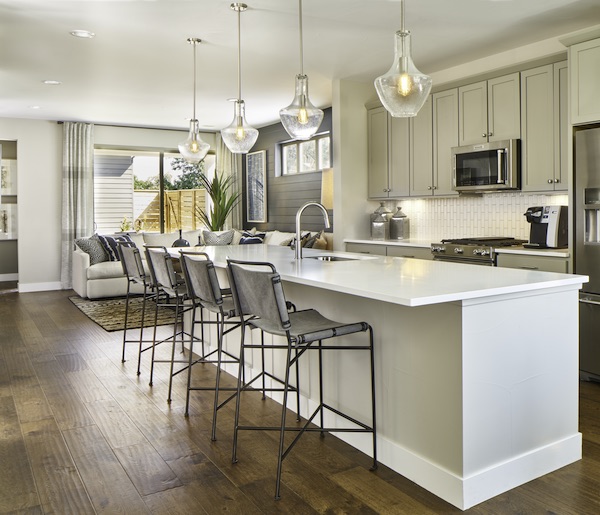
Courtsey KGA Studio Architects, Photo: David Patterson
What is Wellness Design?
An offshoot of the green movement and interest in avoiding toxic chemicals, wellness design focuses on creating a healthy environment for humans, according to John Guilliams, partner and the director of design at KGA Studio Architects in Louisville, Colo. “The wellness movement is a result of the sustainability movement, which is a reflection of environmental concerns,” Guilliams says. “[Wellness Design] has evolved from the concerns of cost and realizing that there is a better way. It’s a lot easier to take care of yourself than to go to the doctor every week.”
There is no set definition for wellness design or one way to build with wellness in mind. Instead, it tends to be a catch-all for reliable HVAC systems, tight framing, water filtration systems, and other health-centered design features. Instead, professionals say it is helpful to think of wellness design in its different sections.
[ Related : BRILLIANT CLAIMS THE FIRST MAINSTREAM BUILT-IN SMART HOME, LIGHT CONTROL SYSTEM ]
“I’ve organized the core parts into what I call the ‘Five Facets of Wellness Design’: Health & Fitness (bidet-style toilets, combi-steam ovens); Safety & Security (radon detectors, kitchen and bath ventilation); Accessibility (barrier-free home entries and showers); Functionality (workstation sinks, porcelain slab), and Comfort & Joy (towel warmers, window seats),” Gold says. “Some, like hand-held massaging showerheads, swing-out organizers in blind corner cabinets or steam showers, cover more than one facet.”
There’s no official playbook for wellness design
Creating a healthy environment includes a lot of moving parts from the air quality to the humidity level to the amount of sunlight, but there isn’t a consensus on the best way to approach wellness design.
“What has surprised me the most is that there isn’t yet an established wellness design standard or certification for single family residential homes,” Gold says. “There are standards and certifications that include wellness design, and there are standards and certifications for commercial and multi-family residential, but I haven’t encountered a comprehensive, universally accepted standard that focuses on individual residences.”
[ Related: 11 WAYS TO CREATE A TOUCH-FREE SMART HOME ]
However, there is a certification for accessible design, which is an important component for the quality of life for those with disabilities living at home. Builders can earn a CAPS (Certified Aging in Place Specialist) certification from NAHB by completing their courses and graduating from the program.
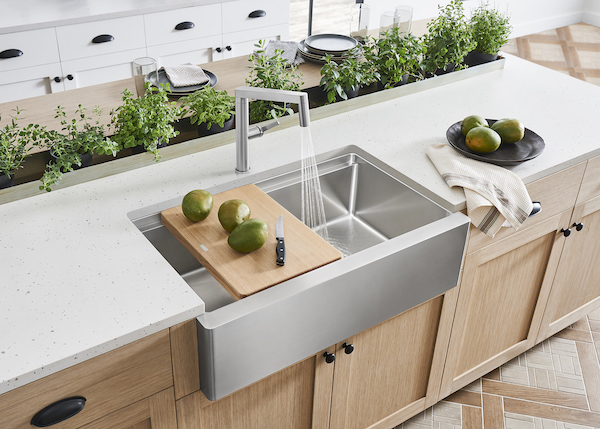
Photo Courtesy BLANCO // Wellness by Design (Tiller Press) // Jamie Gold © 2020
Consider the style and materials of the home
“Different spaces call for different materials depending on their use, but the principles of promoting health and fitness, safety and security, accessibility, functionality, comfort and joy can and should carry throughout the house,” Gold says.
Although wellness design can be incorporated into any home, certain styles and materials provide unique challenges, according to Gold. Lots of nooks and crannies can make it difficult for homeowners to clean, leading to an increase of dust in the home.
“It’s generally fair to say that the simpler the style, the less maintenance it often requires,” Gold says. “That would include modern and Craftsman to be sure.” Still, there are exceptions. High gloss finishes, for example, require more upkeep than their more matte counterparts.
[ Related: 7 DESIGN IDEAS TO STEAL FROM THE 2020 NEW AMERICAN HOME ]
Tailoring materials to a client’s lifestyle can help them better maintain the home as well. For instance, Gold says that incorporating durable, low-maintenance flooring that won’t scuff and is easy to clean would be perfect for a family that loves mountain biking or being outdoors.
Layout rooms with human nature in mind
The best home gym or meditation room is pointless if a homeowner doesn’t use it. Guilliams says that finding space close to where someone spends most of their time increases the odds that they’ll actually pick up a dumbbell or carve out some time for pilates--unless your client is extremely proactive, the basement gym might not cut it. Out of sight, out of mind.
One way to avoid the trap of compartmentalizing activities and decreasing the chance of a homeowner using each room is to create multipurpose spaces on the first floor of the home. And during the pandemic, multipurpose has taken on even more importance in home design.
“The days of having that little cubby that you have your home office in isn’t going to work right now if we continue with the way we’re progressing,” Guilliams says. “It might have to be a bit bigger and located in a different place in the floor plan. Maybe you add five feet to the windows so you can incorporate a TV and smart mirror.”
[ Related: 8 WINNERS OF THE BEST OF KBIS AWARDS 2020 REVEALED ]
Natural light, good ventilation, and enough legroom can easily transform a home office into a meditation, workout, or crafting room. By proactively designing the space, an architect or builder can ensure that the home not only gives buyers what they need, but where they need it.
Guilliams says builders should resist installing some features, such as cleaning closets, in easy to reach places like under the bathroom sink. Instead, placing them in basements or laundry rooms can keep them handy while protecting a family from off-gassing or accidental ingestion.
[Related: 5 DESIGN, PRODUCT RESOLUTIONS YOU SHOULD MAKE FOR 2020 AND BEYOND]
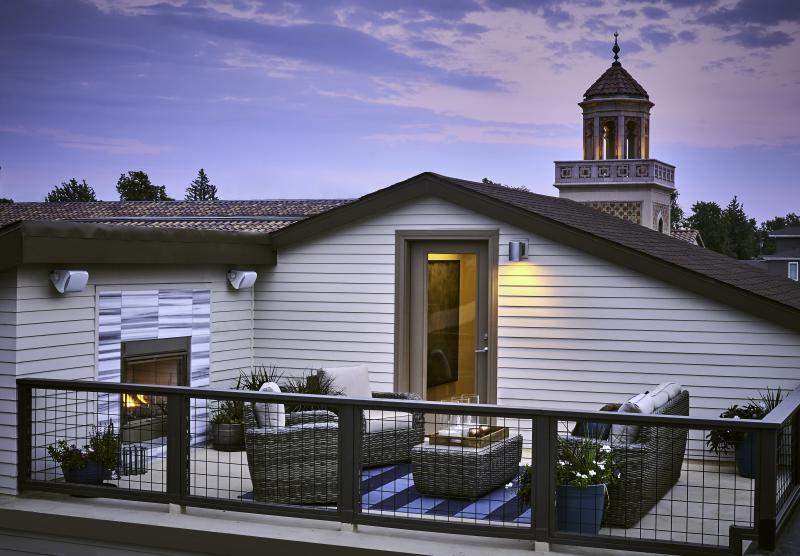
Courtsey KGA Studio Architects Photo: David Patterson
Buying into the wellness lifestyle
Successful wellness design doesn’t end with the sale of a home, however. Guilliams says the goal is to inspire a change in the lifestyle of the homeowner. He encourages builders who work with him to give wellness packages that include products and information to help get the family started on prioritizing their physical and mental health.
“If somebody is really interested in pursuing wellness as a design feature, they really have to be committed to it,” Guilliams says. “You can provide all of the water filtration, air filtration, you can provide the rooms for meditation, but unless the occupant is on board with it, it’s really not going to benefit them.”
By providing the wellness packages, designing the space for ease of use, and educating the buyer on wellness design, home builders can give their buyers the best chance of getting the most out of their homes. Guilliams says the best way to do this is explain the benefits and show minimal extra cost.
[ Related: DAIKIN UNVEILS NEW ONE+ SMART THERMOSTAT ]
